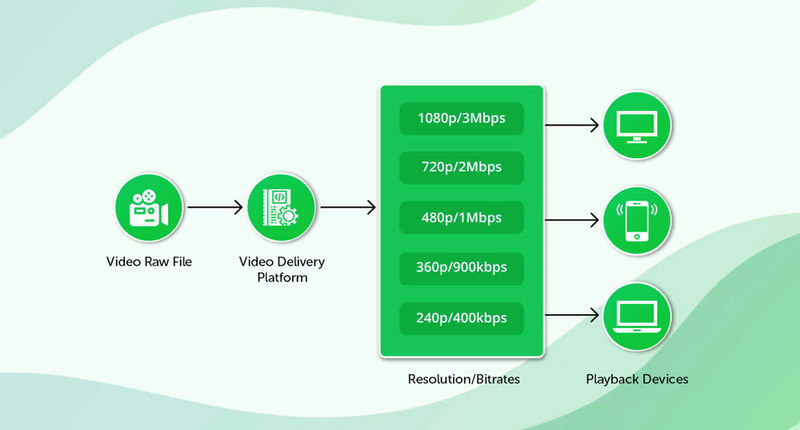What does transcoding do for your user?
Video delivery platforms that are heart of every OTT or IPTV service, consist of several parts tied together in a single process of content transmission. As a rule video platform among others includes CDN, streamer and transcoder. Video transcoding is inseparable from OTT and IPTV. Basically, it helped to transfer video content to the Internet and to every possible device viewer might choose. Here is the fact: a modern video service can’t operate normally without transcoding.

What is transcoding?
Video transcoding is the conversion from one digital format to another, such as for movie data files. This involves translating all three elements of a digital video at the same time — the file format, the video, and the audio.
This is important when a video service is multiscreen and works with different bandwidth capacities. In this case transcoder is in charge of converting incoming video file to a better-supported suitable video format.
Why is transcoding critical?
1. Video transcoding is critical when you want your content to reach more end users
For example, you’re doing a live stream from a sports event. Your stream will be delivered live to online viewers; however, user might have problems:
Those users who have not sufficient bandwidth won’t be able to view the stream — they’ll be watching the ‘buffering’ circle.
In order to render the Speex audio, most people will need to watch using Flash Player on a computer. So you can exclude almost anyone with slower data speeds, tablets, and mobile phones.
With video transcoding video platform can create time-aligned video streams with a different bitrate and frame size, suitable for any type of device - you reach any screen on the planet.
2. Video transcoding helps to optimize video quality
Transcoding enables streamer to work fast and smooth. This duet, accompanied by CDN, lets viewers with fast internet connections receive high-resolution videos while those with slower network connections can access lower-quality videos. Although the video won’t look as great, it will greatly reduce buffering problems.
While these are well founded reasons to use transcoding, it still has some issues.
Increasing need for storage. Video transcoding is a somewhat cumbersome process that also leads to an issue of storage capacity, especially with the increasing use of video. 82% of internet storage is video.
Increasing online traffic. According to Cisco’s Virtual Networking Index report, online video could make up 82% of all online traffic by 2020, up from 59 percent in 2014. Video is already far and away the largest source of network bandwidth consumption.
Increasing need for video compression. As billions of users make and use massive volumes of video, video compression has become a critical technology to help manage skyrocketing bandwidth requirements.
And what about the cost?
Transcoding is a part of streaming cost.
Today video services have a task to optimize transcoding costs. It demands a scrupulous calculation that includes parameters like number of subscribers, number of types of devices to deliver content, coverage, perspectives of service growth and so on.
Then, video service owner has to choose between cloud or hardware solution, using own transcoding software or rent it from a SaaS company, decide whether to use HEVC or h.264 standard. Or maybe employ Content Aware Encoding (CAE) which uses machine learning to compare content against known parameters for a given device and/or media player type. It can boost the picture quality and reduce the distribution cost. How about QVBR coding?
Anyway, when dealing with serious technical issues, crucial for your TV service, you need a reliable partner that can help you through all the tricky abbreviations.
Contact SPB TV to find an optimal solution!
